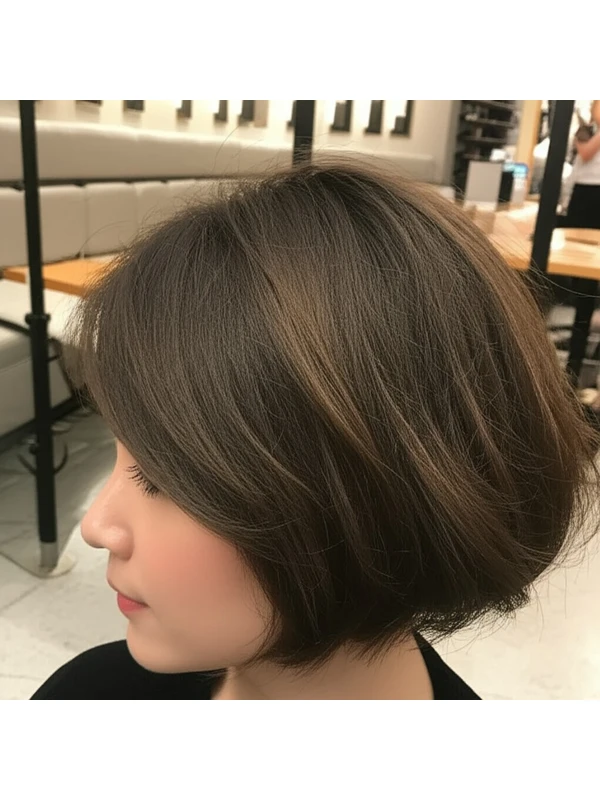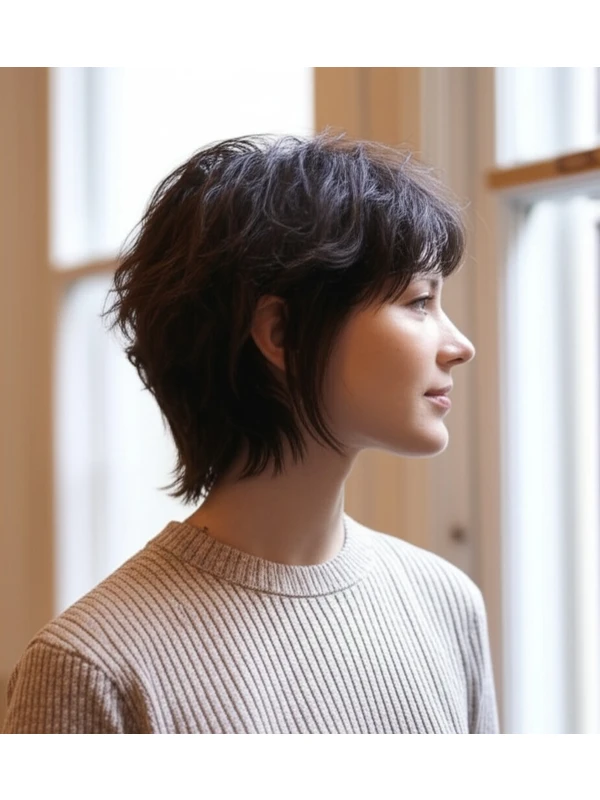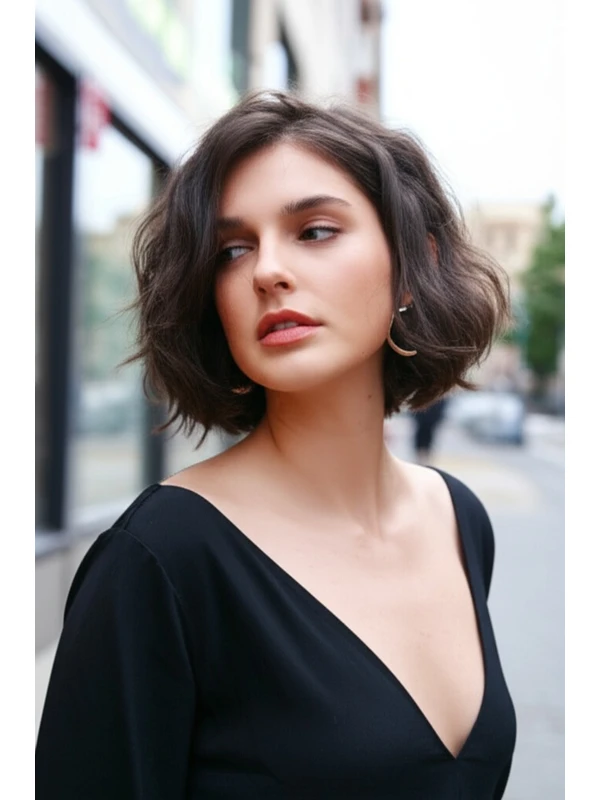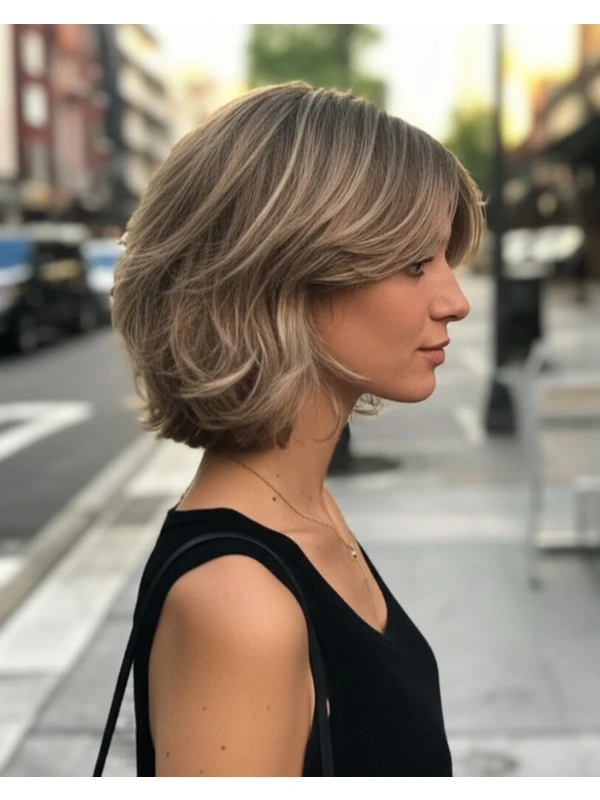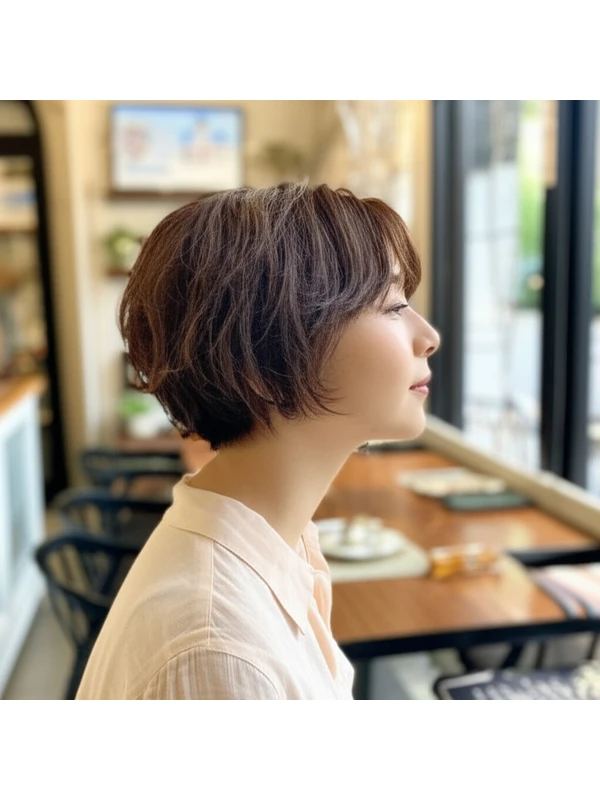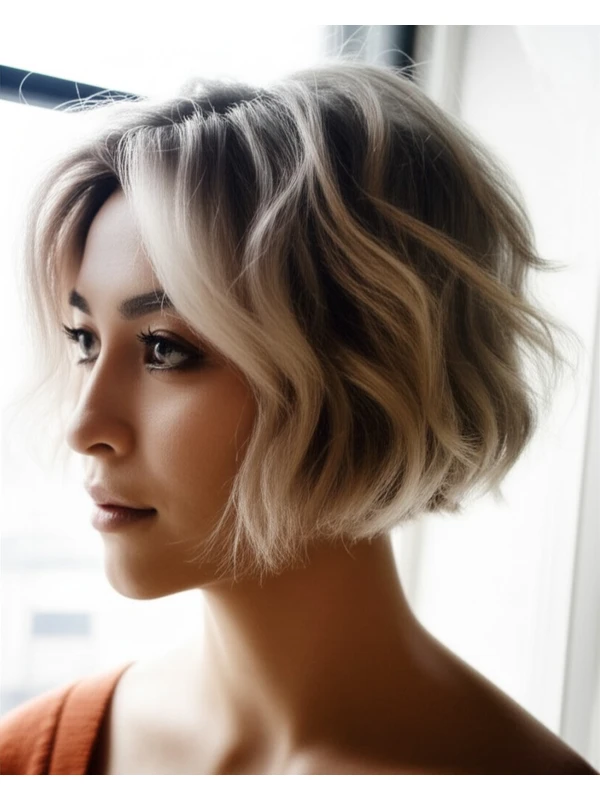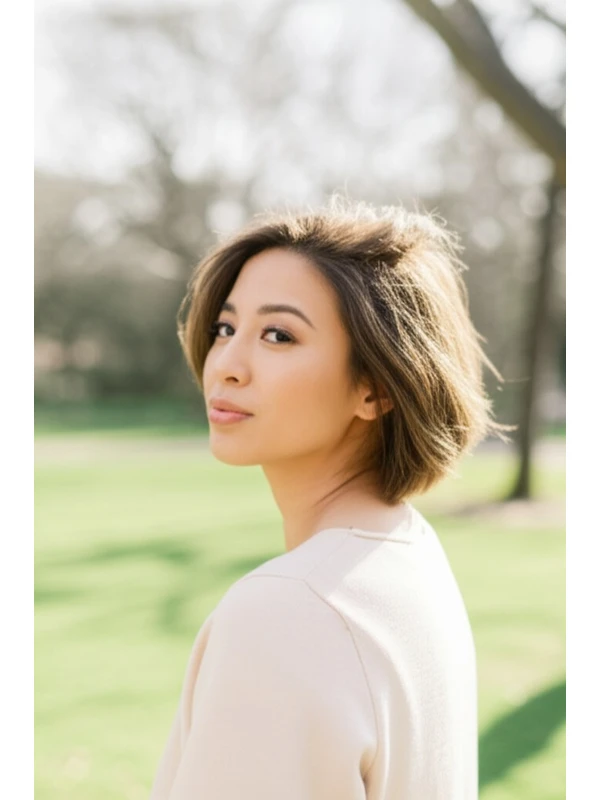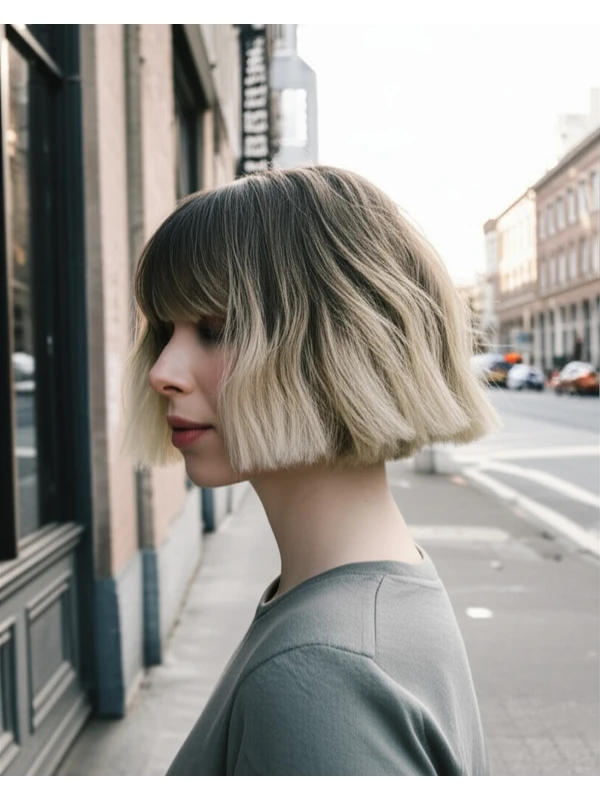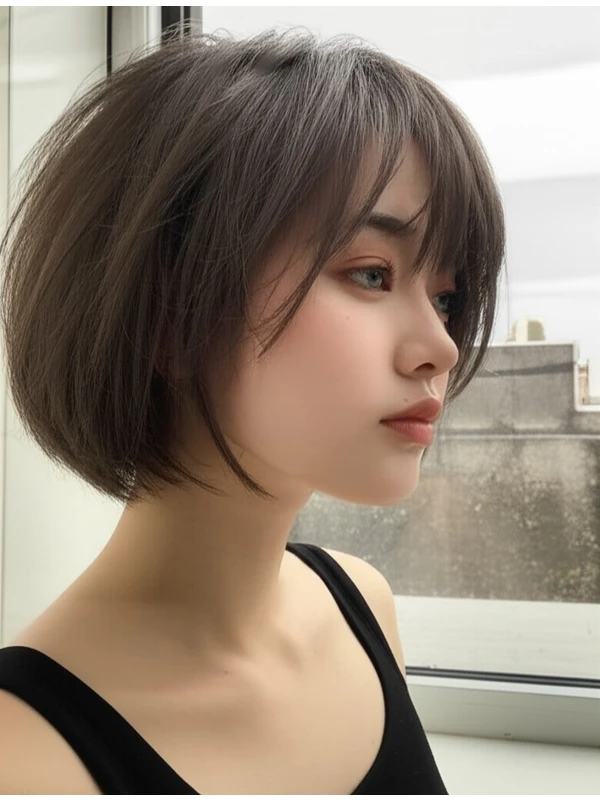#The Italian Bob: A Timeless Classic for Every Style
The Italian bob is a chic and versatile hairstyle that’s been captivating women for decades. It's more than just a haircut; it's an attitude! This guide will break down everything you need to know about the Italian bob, from its history to how to make it work perfectly for you.
#1) Background & Definition: What is an Italian Bob?
The Italian bob gets its name from the sophisticated and effortless style often seen on iconic Italian actresses. It’s characterized by a blunt, precise cut that sits just above or at the jawline, creating a strong and defined shape. Think Audrey Hepburn – timeless elegance!
Key Features:
- Blunt Lines: The defining characteristic is its clean, straight edges.
- Jaw-Length (or slightly longer): Typically falls between chin to shoulder length.
- Minimal Layers: While some subtle layering can add movement, the focus remains on a solid shape.
- Sleek Finish: Traditionally styled smooth and polished, though textured versions are increasingly popular.
Typical Length Ranges:
- Chin-length: A classic choice that emphasizes jawline definition.
- Just below the chin: Offers slightly more length for those who prefer it.
- Collarbone-grazing (longer bob or "lob"): Provides a softer, more elongated look.
Alternative Names: Jaw Bob, Blunt Bob, Italian Cut
#2) Face Shape Fit: Finding Your Perfect Angle
The Italian bob's strength lies in its ability to flatter many face shapes. However, small adjustments – particularly with fringe – can maximize the effect.
- Oval Faces: Lucky you! The Italian bob looks fantastic on oval faces as is. A center part enhances symmetry.
- Fringe Option: A straight-across blunt bang or a softly angled fringe works beautifully.
- Round Faces: This cut can help elongate the face. Keep the length at or slightly below the jawline to avoid emphasizing roundness. Avoid overly soft, wispy layers.
- Fringe Option: A side-swept fringe can create asymmetry and slim the face. A blunt, shorter bang is also a strong choice for definition.
- Square Faces: Softening the angles is key! The Italian bob adds softness to a square jawline.
- Fringe Option: An angled fringe that softens the forehead or a longer, wispy fringe can be very flattering. Avoid blunt, heavy bangs which will accentuate angularity.
- Heart Faces: Balance a wider forehead with volume at the jawline. A slightly longer bob (collarbone length) is often most flattering.
- Fringe Option: Side-swept or wispy fringe softens the face and draws attention away from the widest point (the forehead).
- Diamond Faces: Similar to heart faces, a slightly longer Italian bob can help balance proportions. Adding volume at the jawline is key.
- Fringe Option: A soft, side-swept fringe will soften angles and enhance overall harmony.
- Oblong (Long) Faces: Avoid styles that make your face appear even longer! Keep the bob at or slightly below the chin to add width. A heavier fringe can also help shorten a long face.
- Fringe Option: A blunt, straight-across bang will visually shorten the face.
#3) Body Proportions & Height Guidance: Tailoring the Silhouette
The Italian bob isn't just about your face; it impacts your overall silhouette too!
- Petite: Shorter, chin-length bobs create a more balanced look. Longer versions can overwhelm a smaller frame.
- Average Height: Most lengths work well – experiment to find what you love!
- Tall: Collarbone-grazing or slightly longer bobs elongate the body in a chic way.
- Narrow Shoulders: Volume at the jawline adds visual width and balance. Layering can also help create this illusion, but avoid excessive layering which could look disjointed.
- Broad Shoulders: A chin-length bob with minimal volume helps maintain balance. Avoid styles that add extra bulk around the shoulders.
- Short Neck: Chin or slightly below-chin lengths are generally best to elongate the neck visually. Avoid overly voluminous cuts at the crown, which can make a short neck appear even shorter.
- Long Neck: A longer bob (collarbone length) softens the neckline and creates a more balanced look.
#4) Works Best With Hair Types & Densities: Finding Your Match
The Italian bob is surprisingly adaptable but understanding your hair's natural tendencies is key!
- Straight Hair: This cut shines with its clean lines. Easy to style sleek or add texture.
- Wavy Hair: Requires a skilled stylist who understands how waves will fall – layering may be needed for movement without losing the bob’s shape.
- Curly/Coily Hair: Can work beautifully, but shrinkage is crucial to consider! A longer length (collarbone or shoulder) is often necessary to account for curl factor. Layering is essential to avoid a triangular shape as hair dries.
- Shrinkage Tip: Coils can shrink up to 75% when dry, so discuss this with your stylist before the cut!
- Fine Hair: A blunt bob creates the illusion of thickness. Avoid excessive layering which can make fine hair look even thinner.
- Medium Density: The Italian bob works well – consider subtle layers for movement.
- Thick Hair: Can handle a more structured, blunt cut. Point cutting (slight angles) at the ends can help remove bulk and prevent a boxy appearance.
#5) Styling Variations: From Sleek to Textured
The beauty of the Italian bob is its versatility!
- Sleek vs. Textured: A classic sleek style uses a flat iron for polished perfection. Texturized versions incorporate subtle layers or point cutting for movement and effortless cool.
- Middle vs. Side Part: Middle parts create symmetry, while side parts add softness and asymmetry.
- Fringe Variations: Blunt bangs, angled fringes, wispy fringes – the possibilities are endless!
- Occasion Styling:
- Casual: Air-dried with a touch of texturizing spray.
- Office: Sleek and polished with a flat iron.
- Evening: Add volume at the roots for an elevated look, or create soft waves using a curling wand.
#6) Maintenance: Keeping Your Bob Beautiful
Regular trims are essential!
- Trim Cadence: Every 6-8 weeks to maintain shape and prevent split ends.
- At-Home Routine: Gentle shampooing and conditioning. Deep condition regularly, especially if you have curly or color-treated hair.
- Heat vs Air Dry: Minimize heat styling whenever possible. When using heat, always use a protectant spray.
- Product Checklist:
- Shampoo & Conditioner (suited to your hair type)
- Leave-in conditioner (especially for dry or curly hair)
- Root lifter (for volume)
- Smoothing serum/oil (for sleekness and shine)
- Texturizing spray (for a more undone look)
- Estimated Daily Styling Time: 15-30 minutes, depending on desired style.
#7) Grow-Out Roadmap: Embracing the Evolution
The Italian bob evolves as it grows!
- Months 1-3: The shape remains sharp and defined.
- Months 3-6: The length starts to elongate. Consider adding subtle layers to soften the lines if desired. Maintain face-framing details with regular trims.
- Maintaining Shape: Communicate clearly with your stylist about how you're styling it at home, so they can advise on trimming techniques that will keep the shape looking intentional as it grows out.
#8) Color Pairings: Enhancing Your Bob’s Beauty
Color can dramatically enhance an Italian bob!
- Cool Undertones: Ashy blondes, cool browns, and even deep blacks look stunning.
- Warm Undertones: Honey blondes, caramel highlights, and rich copper tones complement warm skin tones beautifully.
- Low-Commitment Options: Balayage or babylights add dimension without a harsh root line – perfect for those hesitant about drastic color changes.
#9) Season & Occasion Guide: Adapting to the Moment
- Spring/Summer: Lighter, brighter colors and textured styles feel fresh and effortless.
- Fall/Winter: Richer tones (chocolate browns, deep reds) and sleek styling create a sophisticated look.
- Work: Sleek and polished for professionalism.
- Weddings: Soft waves or an updo with face-framing pieces.
- Parties: Add volume at the roots and playful accessories.
#10) Cost & Time: What to Expect
- Salon Time: Typically 45 minutes to 1.5 hours, depending on complexity of style/color.
- Estimated Price Range: Moderately priced – expect a slightly higher cost than simpler cuts due to the precision required.
#11) Pros & Cons: Weighing Your Options
Pros: Timeless, versatile, flattering for many face shapes, relatively easy to maintain (with regular trims). Cons: Requires precise styling to look its best, can be high-maintenance if you want a perfectly sleek finish, may require more frequent salon visits.
#12) Salon Consultation Script: Your Questions Answered
Here are some prompts to help guide your conversation with your stylist:
- “I’m interested in an Italian bob. Can you assess my face shape and recommend the best length and fringe options?”
- "My hair is [hair type]. How will that affect the cut, and what adjustments might be needed?"
- “How can I style this at home with minimal effort? What products do you recommend?”
- “I’m concerned about shrinkage. Can we account for that in the length of the cut?”
- “Can we discuss how to grow out this style gracefully, and what trims will be needed along the way?"
#FAQs: Your Burning Questions
- Is an Italian bob suitable for fine hair? Yes! A blunt cut creates the illusion of thickness.
- How do I prevent my curly/coily hair from looking triangular after a bob cut? Layering is essential, and discuss shrinkage with your stylist beforehand.
- Can I style an Italian bob without heat? Absolutely! Air-drying with texturizing products can create a relaxed, effortless look.
- What if I don't want bangs? The Italian bob looks just as stunning without fringe – the clean lines are its own statement!
- How often do I need to get my hair trimmed? Every 6-8 weeks to maintain shape and prevent split ends.
- Is this style difficult to manage for a beginner? It can be initially challenging if you’re aiming for the perfectly sleek look, but with practice and good products, it's manageable!

